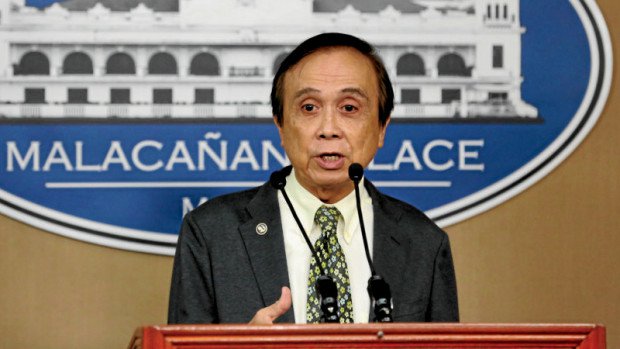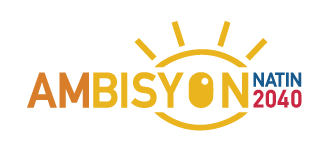Ben O. de Vera (Inquirer.net)

The Duterte administration plans to reduce poverty, especially in the provinces, as well joblessness through sustained robust economic growth in the next six years in line with the vision to make the country a high-income country by 2040.
In a statement Tuesday, state planning agency National Economic and Development Authority said the Neda Board chaired by President Duterte last Monday approved the Philippine Development Plan (PDP) 2017-2022, which will serve as the administration’s development blueprint.
Neda said the PDP 2017-2022 targets 7-8 percent gross domestic product (GDP) growth in the medium term, with economic expansion seen trickling down and benefiting more Filipinos.
The PDP 2017-2022’s inclusive growth thrust would slash national poverty incidence to 14 percent by 2022 from 21.6 percent in 2015, Neda said. In rural areas, the higher poverty rate of 30 percent in 2015 is expected to be cut to 20 percent in six years’ time through the medium-term plan, Neda added.
As for job creation, the PDP 2017-2022 wanted to reduce unemployment to as low as 3-5 percent by 2022 from 5.5 percent at present, according to Neda.
Also, “included among the targets are higher trust in government and society, more resilient individuals and communities, and a greater drive for innovation,” Neda said.
Neda noted that the PDP 2017-2022 was the first medium-term development plan anchored on the long-term vision dubbed “AmBisyon Natin 2040.”
Launched last year, AmBisyon Natin 2040 was aimed at tripling Filipinos’ per capita income to $11,000 in 24 years’ time by sustaining at least 6.5-percent annual GDP growth alongside the implementation of policies that would make the Philippines a high-income country by 2040.
A survey conducted early last year showed that the majority of Filipinos aspire for a “simple and comfortable life,” which Neda had said reflected middle-class lifestyle—earning enough, educating all children until college, owning a car, owning a medium-sized house, finding time to relax with family and friends, owning a business, and being able to travel around the country.
Last October, President Duterte signed Executive Order No. 5, which adopted the AmBisyon Natin 2040 as the long-term vision for the Philippines, such that “by 2040, the Philippines shall be a prosperous, predominantly middle-class society where no one is poor.”
Neda added that the PDP 2017-2022 also took off from the Duterte administration’s 10-point socioeconomic agenda ultimately aimed at slashing poverty.
“By the end of 2022, Filipinos will be closer to achieving their long-term aspirations. Through this PDP, the current administration will lay a solid foundation for inclusive growth, a high-trust society, and a globally-competitive knowledge economy by grounding its development thrusts on Malasakit, Pagbabago, and Patuloy na Pag-unlad,” Socioeconomic Planning Secretary Ernesto M. Pernia said, referring to the three pillars of the PDP 2017-2022.
“We want the Philippines to be an upper-middle income country by 2022. With the right policies and with mutual trust between government and the citizenry, this is very possible,” said Pernia, who is also the Neda chief.
Neda said the PDP 2017-2022’s “Malasakit” pillar “aims to regain people’s trust in public institutions and cultivate trust among fellow Filipinos” by “promoting awareness of anti-corruption measures, improving the productivity of the public sector, implementing regulatory reforms, increasing access to legal aid, pursuing corrections reform, and promoting culture-sensitive governance and development.”
The second pillar “Pagbabago” would allow “inequality-reducing transformation through increasing opportunities for growth of output and income.”
Under the second pillar, Neda Undersecretary Rosemarie G. Edillon said the following will be done: “Opportunities in agriculture will be expanded. We will increase our presence in the global market, and we will streamline bureaucratic processes for both local and foreign businesses. We will pursue strategies such as achieving quality and accessible basic education for all, enhancing disaster risk reduction and management mechanisms, and adopting universal social protection.”
As for the third pillar “Patuloy na Pag-unlad,” Neda said it would “concentrate on increasing potential growth through sustaining and accelerating economic growth… by maximizing the demographic dividend and vigorously advancing science, technology and innovation.”
“Strategies under this pillar will ensure maintaining macroeconomic and financial stability, and observing fiscal prudence while the tax system is being reformed into a much simpler, fair and equitable one. A strategic trade policy will also be implemented alongside measures to promote competition and establish a level playing field,” Neda added.
According to Neda, “under these three pillars lie four cross-cutting bedrock strategies, which are: attaining just and lasting peace; ensuring security, public order and safety; accelerating strategic infrastructure development; and ensuring ecological integrity and a clean and healthy environment.”
“Furthermore, to set the direction for future growth, the PDP 2017-2022 espouses a National Spatial Strategy (NSS), recognizing that population, geography, and cities are engines of economic growth. The NSS was adopted to identify specific strategies and policies in order to decongest Metro Manila, connect rural areas to key growth areas, and to improve linkages between settlements for higher resilience against natural disasters,” according to Neda.
Also, the PDP 2017-2022 “gives special attention to overseas Filipino workers and their families” as “it identifies strategies and policies that will work to protect the rights of overseas Filipinos, improve their quality of life, and integrate them into the country’s development.”
Finance Secretary Carlos G. Dominguez III, who heads the Duterte administration’s economic team, was quoted by Neda as saying that the PDP 2017-2022 was “close to a masterpiece, and is unlike any other medium-term development plan I have read.”
Neda said the PDP 2017-2022 will be incorporated in a draft executive order that shall mandate all government agencies to align their programs, projects as well as activities with the said development blueprint.
“Neda will work closely with national government agencies to prioritize identified policies and programs in order to further the country’s development goals. Neda will also be monitoring progress with various interagency committees, and will be reporting regularly its accomplishment of outputs and outcomes through socioeconomic reports,” the agency added.
